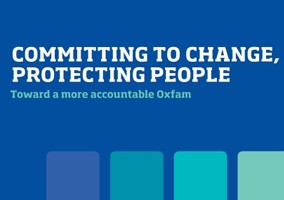The Charity Commission has finally published its Oxfam inquiry report, and it has been well and truly chewed over.
Much of the focus, rightly, has been on organisational culture, and whether Oxfam’s leadership since 2011 fostered an environment that prioritised the organisation’s public image and revenue streams over people’s safety and wellbeing. See our news analysis for views on this.
But equally if not more important for the sector was the report of the independent commission appointed by Oxfam International to review its safeguarding practices.
Since the scandal broke in February last year, Oxfam had already massively increased its safeguarding budget, hired a safeguarding associate director at Oxfam International and a director of safeguarding at Oxfam GB. It had updated all its relevant policies, enhanced its induction procedures, introduced a new performance management process and provided training across the organisation.
Yet the independent commission has effectively dismissed all that as mere tinkering, and said the organisation needed to completely “reinvent” its entire safeguarding system across its international network.
I doubt there is a single trustee reading this who has not already had safeguarding on their board agenda and taken steps to improve their charity’s policies and procedures. The chair of one of the UK’s largest service delivery charities recently confessed to me that Oxfam had done them a huge favour as, before February 2018, safeguarding was barely on their radar. “It is now,” he said, with evident relief.
But the report of the independent commission appointed by Oxfam takes it to another level. Obviously the recommendations within it are the gold standard, as nothing less will do for Oxfam now, but it’s worth a read by other charities.
Use it to see what the gold standard looks like, and to help you judge your own changes against it and reflect on whether your new systems are really as robust and failsafe as you hope.
It’s also worth considering the comments from Judith Davey, chief executive of The Advocacy Project, about prevention being better than cure.
The Advocacy Project has done a lot of work with its beneficiary groups on safeguarding, asking them what “being safe” means to them. The findings were, in Davey’s words, “a real shock”, and suggest that an internal focus on safeguarding, no matter how watertight, may be only half the solution.
Helping your service users to understand what constitutes bad behaviour and know their rights could be a more effective route to safety.
The bottom line is this: if you thought you were done on safeguarding, you might want to think again.
Tania Mason is editor of Governance & Leadership magazine
|
Related articles












